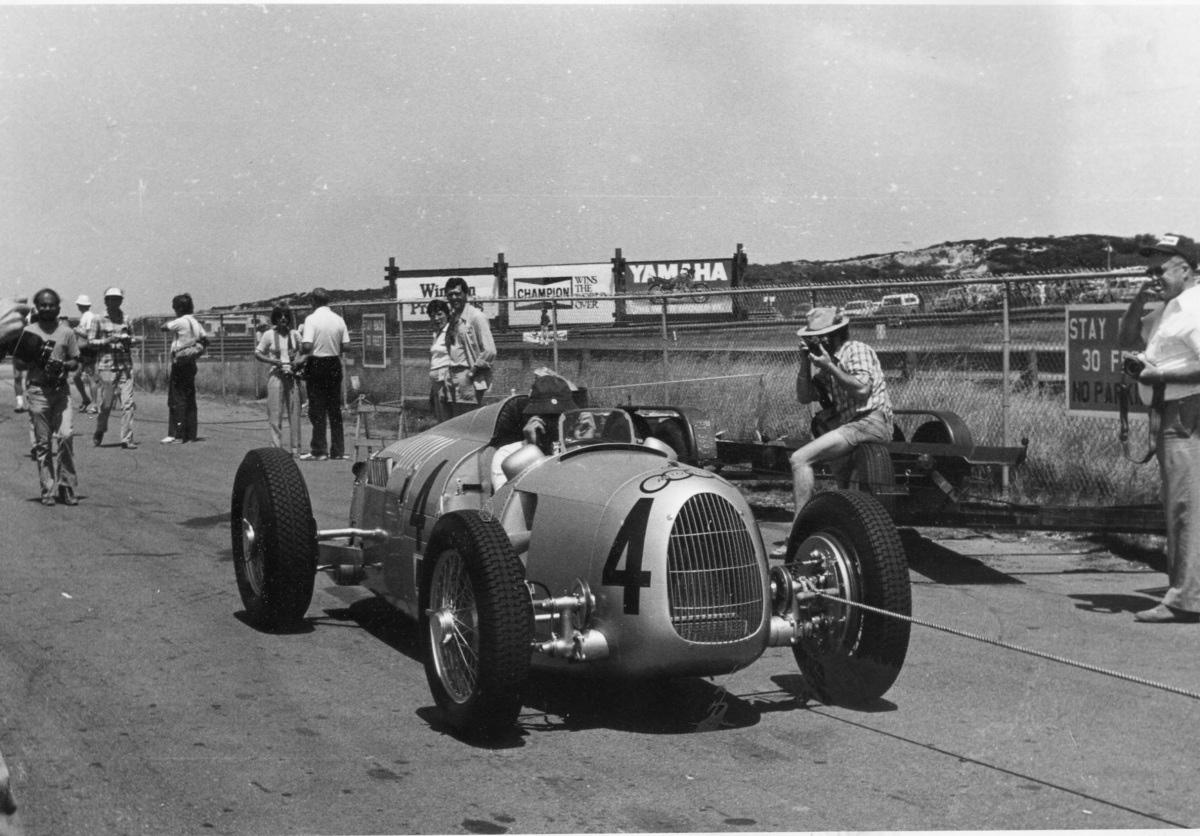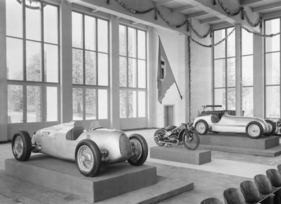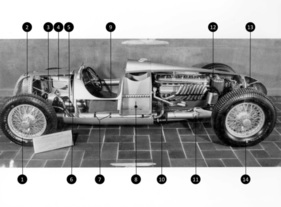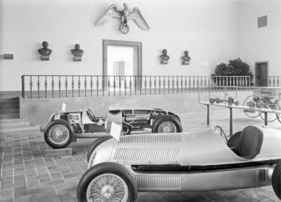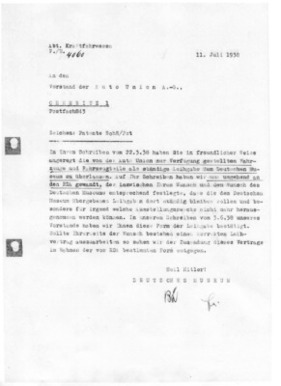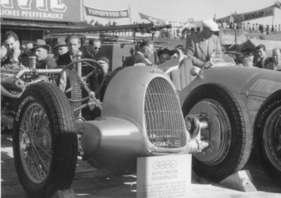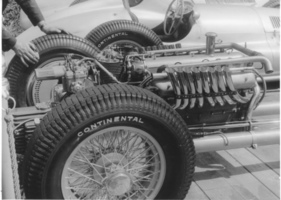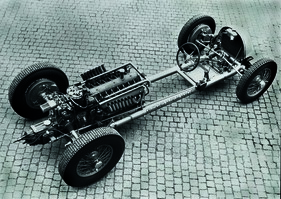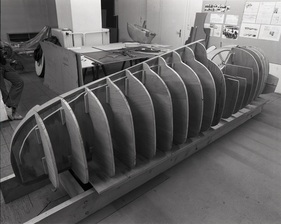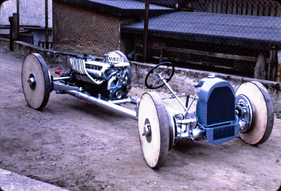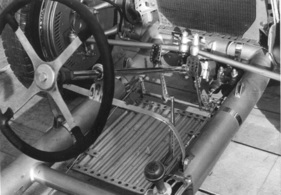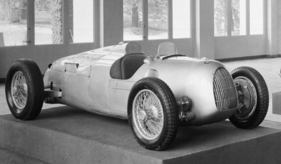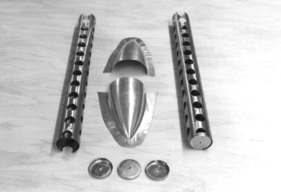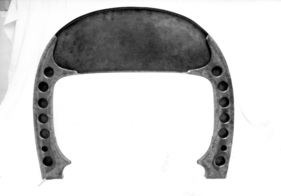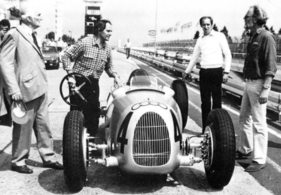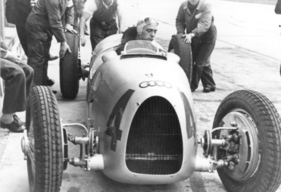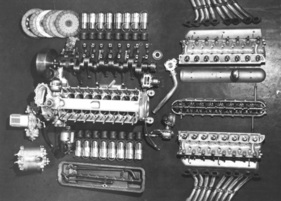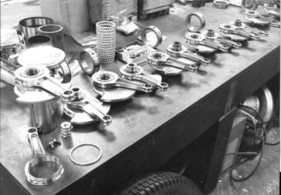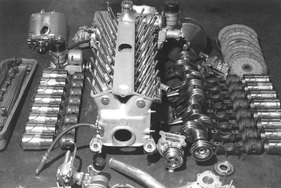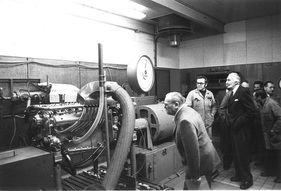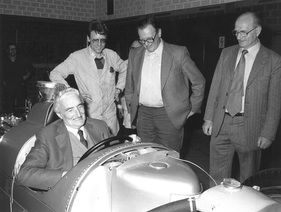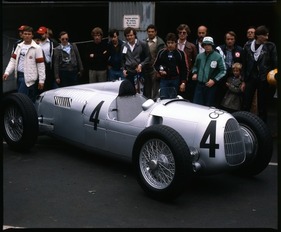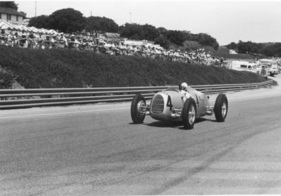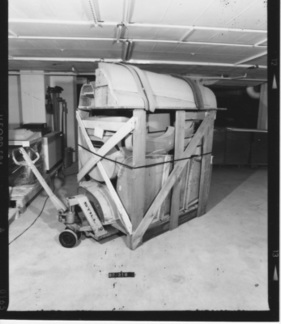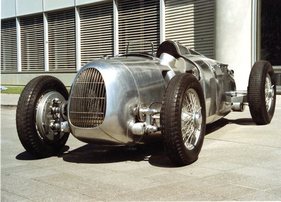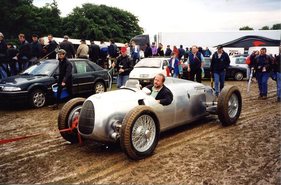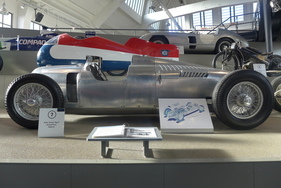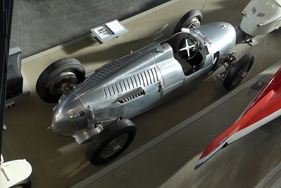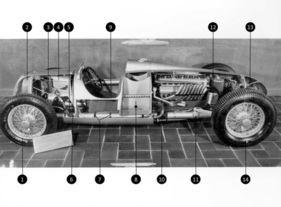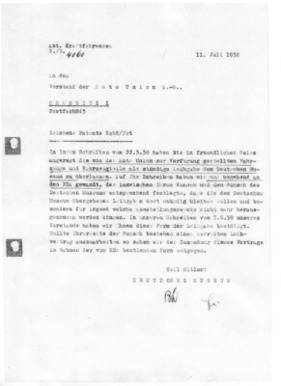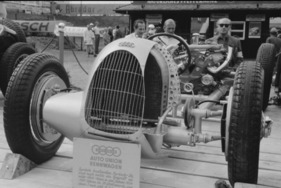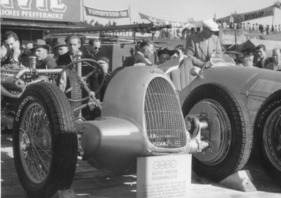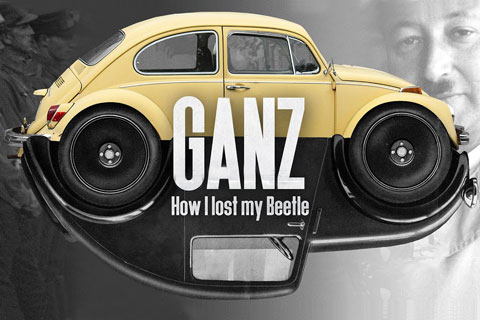Fate of a racing car - The Auto Union Type C in the Deutsches Museum
Summary
The Auto Union Type C was an extraordinarily advanced mid-engine design and therefore ahead of its time in many respects. This article deals with the history of the Deutsches Museum's example, which has an eventful story to tell.
This article contains the following chapters
- The motor hall in the Deutsches Museum
- The Auto Union as a cutaway model in the Deutsches Museum from 1938 to 1942
- The Auto Union from 1945 to 1978
- The reconstruction of the Auto Union Type C
- The new bodywork at Rolf Bunte
- Construction of the 16-cylinder engine at Audi
- The presentation of the Auto Union Type C 1980 at the Nürburgring
- The second new body from Italy
- The Auto Union Type C today in the Deutsches Museum
Estimated reading time: 21min
Preview (beginning of the article)
Ferdinand Porsche's patent specification 692 180 dated May 3, 1933 states that "...the doctrine of arranging the heavy masses of a vehicle in a concentrated manner around its overall center of gravity is known per se." The following photo clearly illustrates the implementation of this principle in the 1936/37 Auto Union Grand Prix Type C car: the driver, fuel tank and drive unit form the cohesive 'heavy mass'. The tank is located almost in the center of gravity of the vehicle, so that the weight distribution between the full (280 l) and empty tank is only 1-3%. The tank has two bulkheads with the overflow from the inner chamber into the outer chamber in the lower area. Two drilled pipes run parallel to the partition walls for reinforcement. The driver, tank, drive unit arrangement is Porsche's continuing innovation in racing car construction and has more or less survived into modern Formula 1.
Continue reading this article for free?
Images of this article

